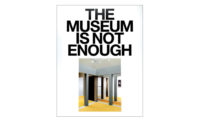With more than 600 entries for the word “model” in the online Oxford English Dictionary, why would Annabel Jane Wharton, in her new book, attempt yet another definition? The answer is because models are everywhere—“from algorithms and economic pie charts to Barbie dolls and video games,” she writes—and now amplified by climate-change and pandemic models. For Wharton, an art historian, only by defining models can one begin to control them—in essence, to determine their meaning.
Architects have long held certain assumptions about models without necessarily defining their meaning outside the design process or the client presentation. Recent histories of the architectural model, such as Matthew Mindrup’s The Architectural Model: Histories of the Miniature and the Prototype, the Exemplar and the Muse (2019), generally view such models without pursuing the meaning of “the model” in other disciplines. Wharton takes up examples of architectural, medical, and computational models. All are protagonists in world-making, but the digital, she claims, “dominates science, technology, and consequently our lives.” The “promiscuity” of models concerned philosopher and art historian Nelson Goodman in 1976, in his book, Languages of Art, but for Wharton today, models aren’t promiscuous—they are “out of control.”
To write a definition of models that might suggest a degree of control, Wharton swerves from pie charts and Barbies to the history of two particular model types before leaping to the digital present. The first is the medical body model, or cadaver, a scientific model with an important if sordid past that involves grave robbers, but also led to modern medicine. As a model, “a cadaver in third-century BCE Alexandria, it might seem, was not significantly different from one in the medical school gross anatomy lab today,” she writes. But now MRI scans and other technologies are modifying representation of the medical body with the hyperreal, or simulacrum, which, she argues, could replace the physical body model.
Wharton’s second model type is the fourth-century Church of the Holy Sepulchre in Old Jerusalem. Believed to contain the tomb of Jesus, the church, she writes, is not an architectural model but a political one, used to spread Christianity. The Temple Church, a “model” of the Holy Sepulchre, was built in London during the First Crusade, as a signpost of the Knights Templar, while the Rucellai tomb in Florence is a model of the church’s aedicule, housing Christ’s tomb, designed by Alberti. Yet another representation, Bernardino Amico’s late 16th-century detailed section drawings of the Holy Sepulchre, accompanied by a text, modeled a walk through the church; later, large tabletop models were made of ornamented olive wood as collectibles for the wealthy. Each model, Wharton writes, reflected not only piety but also the politics of Christianity. Fast-forwarding to the 21st century, Wharton visits Jerusalem as modeled in the video game Assassin’s Creed, set in the year 1191. But as a “crusader” moving through the high-quality digital model of the Holy Sepulchre, one can miss the political meaning of the original.
The book ends with the black boxes that produce digital realism. Like Pandora’s box, their interiors are indecipherable, yet the models they produce are far-reaching, particularly in the sciences and social sciences, where “models have become a dominant means of articulating problems, representing theories, and offering descriptions of the world.” Nonscientific models may be easier to understand, but their meaning is still bound up with narratives and behaviors. Wrestling with the complexity of models, Wharton comes to a “final” definition of some 100 words that ends, “All models act politically. And all models are entangled in discourse.” To which one might add: all models are hypotheses that must be proven.






Post a comment to this article
Report Abusive Comment